The general theme of Horns of Moses is that cyclical, cosmic catastrophes have played a major role in the shaping of the history of our planet and its civilizations. A lot of scientific research is covered in the first half of this book. I will review that as briefly as possible. It can't be avoided because the facts on the ground mattered and had considerable influence on the thinking of the Greek philosophers.
Though there has been a lot of resistance to the idea of catastrophism (probably mostly by the authoritarian-follower-type scientists), a few years ago the Proceedings of the National Academy of Science published a study by an international team of scientists who reached general agreement that a meteorite or comet fragment storm hit the earth a little more than 12,000 years ago and is likely to have been responsible for the extinction of megafauna and many prehistoric peoples that occurred at that time. It is also now being said that evidence for the extreme heat produced by the equivalent of thousands of overhead nuclear explosions has been found on at least two continents.
The resistance to the very idea of Catastrophism is a bizarre phenomenon. It seems that many so-called scientists react to this subject with as much foaming at the mouth as they exhibit when confronted with evidence for the so-called Paranormal. The experiences of Immanuel Velikovsky are a case in point. (And I won't be promoting his ideas here, so relax.) Even though he made a number of predictions that later proved to be correct, Velikovsky spent four years trying to be heard in established scientific circles, meeting with total failure. Those who supported him suffered ostracism and academic blackballing. The editor who had handled the publication of his book was dismissed and, under pressure from the scientific establishment, the publication rights were transferred to another publisher. The scientific community worked long and hard to discredit Velikovsky and the Encyclopedia Britannica Yearbook for 1950 does not even mention that Worlds In Collision was a best-seller for that year.
What in the world did Velikovsky say to engender such censorious reactions? Surely if they simply disagreed with him they could write their refutations and allow all to be heard in open forum? Why did they work so hard to silence this book? In the morass of differing scientific opinions, why did this one engender such a near-unanimous outcry of "Foul?"
In his own role as psychiatrist, Dr. Velikovsky analyzed the reactions of the scientific community as being similar to the response of a psychotic who has been told that his problems stem from the repression of desires to rape his mother and kill his father; the patient has erected elaborate defenses against this unbearable truth, and it manifests in disorder which all operate to conceal from him his true desires. And, while he may know that it is the truth, he lashes out in violent fury against the one that has deprived him of his elaborately constructed defenses.
Rephrasing that in the context of our topic here, catastrophism assaults our deepest feelings of security, our prejudices against change. Psychologists have constructed charts, which itemize events leading to stress, giving each a point value. Apparently, Cosmic bombardment of our planet is off the scale. A thought such as this affects us deeply even if we are speaking of things, which may have been experienced in ages past. "We want to feel that our homes rest on solid foundations and that the blue sky above us is a benevolent firmament." What good is a house," said Thoreau, "if we haven't a respectable planet to put it on?" (Note that this fear is being politicized by the Green Movement and their Catastrophic Global Warming/Climate Change program. Climate Change activists are as rabid and terrified as those who attacked Velikovsky.)
Modern theories of geology, paleontology, archaeology, biology, cosmology, and so forth, are all expressed in Darwinian terms which state that change takes place slowly over eons, aided by gradual processes of natural selection, erosion, etc. James Hutton, founder of the modern view, expressed it: "No powers are to be employed that are not natural to the globe, no action to be admitted of except those of which we know the principle." It is a doctrine that was long taken for granted within the scientific community. "If nature were not uniform, then one could not use the results of one experiment to predict the outcome of the next; neither could one assume that laws founded on a thousand varied observations would remain true. Without uniformity in nature, doing physics, chemistry, and biology would be like traveling in Alice's Wonderland. Logic, science, and life itself would fall to pieces."
To suggest that this idea of slow and orderly process is, in its basic assumption, totally wrong, is a threat of the most disruptive event in the history of science. The dismissal of this as "truth" would eclipse the furor, which surrounded the denial of the earth as the center of the universe. As long as it was accepted that the sun traveled around the earth, all other ancient errors held up as truth. In the same way, as long as the steady state of the solar system is the asserted dogma, all current scientific assumptions will hang together on this point.
Thanks to authoritarian personalities seeking to please wealthy elite authorities who need to retain their control over society, science changes its mind very, very slowly and the truly gifted and original researchers are either worn out from being attacked and defending themselves, or dead, by the time the consensus changes. This is very bad for science and very bad for humanity.
So, getting on with things: First let me mention the work of dendrochronologist/ paleoecologist, Mike Baillie (now retired) of Queens university, Belfast, Ireland. (Baillie is a leading expert in dendrochronology, or dating by means of tree-rings. In the 1980s, he was instrumental in building a year-by-year chronology of tree-ring growth reaching 7,400 years into the past. ) Examining tree rings, Baillie found climate stress periods in 2354 BCE, 1628 BCE, 1159 BCE, 208 BCE, and CE 540. The evidence suggested that these were probably global events to one extent or the other.
The CE 540 event coincides with the second-largest ammonium signal in the Greenland ice in the past two millennia, the largest signal showing in 1014 CE. Baillie explains the lack of historical references being due to the fact that the peoples of the time described what they saw in Biblical terms. Indeed, there were artistic representations of astonishing atmospheric events, but it was almost always explained as being a metaphor for a Biblical concept! There was also the problem that the Aristotelian view of the 'perfect heavens' held sway, and even if events were witnessed and reported, they were explained away or ignored in historical accounts.
Dr. Baillie began to search through historical records and myth. He found that the environmental downturns coincided with the collapse of civilizations, such as the roman empire and the beginning of the dark ages in Europe. He wrote Exodus to Arthur: Catastrophic Encounters with Comets (Batsford (1999)), which relates his tree-ring/ice-core data to a series of global traumas over the past 4,400 years, events that may relate to the Biblical Exodus and dark ages in Egypt, China and Europe.
A later book by Baillie, The Celtic Gods: Comets in Irish Mythology (Baillie & McCafferty (2005)). focused on the CE 540 event which was recorded in the historical records and myths of Ireland. Baillie argues that the mythical imagery and the periodicity of the events are consistent with an Earth-crossing comet that has fragmented such as 2P/Enke, as described by astronomers Victor Clube and Bill Napier (who we will get to shortly). Baillie's latest book, New Light on the Black Death: The Cosmic Connection (Baillie (2006)), marshals the considerable evidence that the Black death (1346-1350) was due to a series of comet related disasters.
Next, along came the work of physicist, Richard Firestone and geologists, Alan West and Simon Warwick-smith, presented in a series of academic papers and a book for the general public: The Cycle of Cosmic Catastrophes: How a Stone Age Comet Changed the Course of World Culture.(2006) They dealt with the - until then - inexplicable mass extinctions of mega-fauna that occurred simultaneously with the onset of the Younger Dryas mini-ice age (c. 13,000 years ago).
[However, long before Baillie and Firestone et al,] in 1990, Victor Clube, an astrophysicist, and Bill Napier, an astronomer, published The Cosmic Winter, a book in which they describe performing orbital analyses of several of the meteor showers that hit earth every year. using sophisticated computer software, They carefully looked backward for thousands of years, tracing the orbits of comets, asteroids, and meteor showers until they uncovered something astounding. Many meteor showers are related to one another, such as the Taurids, Perseids, Piscids, and Orionids. In addition, some very large cosmic objects are related: the comets Encke and Rudnicki, the asteroids Oljato, Hephaistos, and about 100 others. Every one of those 100- plus cosmic bodies is at least a half-mile in diameter and some are miles wide. And what do they have in common? According to those scientists, every one is the offspring of the same massive comet that first entered our system less than 20,000 years ago! Clube and Napier calculated that, to account for all the debris they found strewn throughout our solar system, the original comet had to have been enormous. ...According to Baillie, Clube and Napier, et al., in the same way that Jupiter was struck repeatedly in 1994 by the million-megaton impacts of the comet shoemaker-Levy, so Earth was bombarded 13,000 years ago by the fragments of a giant comet that broke up in the sky before the terrified eyes of humanity. The multiple impacts on the rotating planet caused tidal waves, raging fires, atomic bomb-like blasts, the mass extinction of many prehistoric species such as the mammoth and sabre-toothed tiger, most of humanity, and left the world in darkness for months if not years,
Clube and Napier also calculated that, because of subtle changes in the orbits of Earth and the remaining cosmic debris, Earth crosses through the densest part of the giant comet clouds about every 2,000 to 4,000 years. When we look at climate and ice-core records, we can see that pattern. For example, the iridium, helium-3, nitrate, ammonium, and other key measurements seem to rise and fall in tandem, producing noticeable peaks around 18,000, 16,000, 13,000, 9,000, 5,000, and 2,000 years ago. In that pattern of peaks every 2,000 to 4,000 years, we may be seeing the "calling cards" of the returning megacomet.
Fortunately, the oldest peaks were the heaviest bombardments, and things have been getting quieter since then, as the remains of the comet break up into even smaller pieces. The danger is not past, however. Some of the remaining miles-wide pieces are big enough to do serious damage to our cities, climate, and global economy. Clube and Napier (1984) predicted that, in the year 2000 and continuing for 400 years, Earth would enter another dangerous time in which the planet's changing orbit would bring us into a potential collision course with the densest parts of the clouds containing some very large debris. Twenty years after their prediction, we have just now moved into the danger zone. it is a widely accepted fact that some of those large objects are in Earth-crossing orbits at this very moment, and the only uncertainty is whether they will miss us, as is most likely, or whether they will crash into some part of our planet.(Firestone et al. (2006), pp. 354-355.) [emphases, mine]
It was this event that left the hundreds of thousands of Carolina Bays, the millions of dead creatures - most of them megafauna - piled up in jumbled masses around the globe, and would also have wiped the earth almost clean of any existing human civilization. (This bottleneck is evident in genetic studies.) What Baillie, Clube and Napier propose, in addition to the scenario proposed by Firestone et al., is that our planet has been struck numerous times since then (and maybe even before that major event), and it isn't over.
This 'new' type of natural disaster is beginning to be regarded by many scholars as the most probable single explanation for widespread and simultaneous cultural collapses at various times in our history. These ideas have been advanced largely by practitioners of hard science - astronomers and geologists, dendrochronologists, etc. - and remain almost completely unknown (or completely misunderstood) among practitioners of the soft sciences: archaeologists and historians. This fact significantly hampers the efforts of practitioners of the soft sciences to explain what they may be seeing in the historical record.
A recent example, known as the Tunguska event, occurred over Siberia in 1908 when a bolide exploded about 5 km above ground and completely devastated an area of some 2,000 km² through fireball blasts. While it is still a matter of controversy among researchers, this cosmic body is thought to have measured some 60 m across (some say 190 m across) and had the impact energy of about 20 to 40 megatons (some say 3-5 megatons), equivalent to the explosion of about 2,000 (or at least several hundred) Hiroshima size nuclear bombs, even though there was no actual physical impact on the Earth. In other words, if there were ancient, advanced civilizations destroyed by multiple Tunguska-like events (remember the hundreds of thousands of Carolina Bays?), it would be no wonder there is no trace, or very little, and what evidence does exist, such as the bays, are usually ascribed to 'anomaly' or ignored altogether.
Baillie, Clube and Napier identified the progenitor of the Taurid complex as a giant comet that was thrown into a short-period (about 3.3 year) orbit, some time in the last twenty to thirty thousand years. The Taurid complex currently includes the Taurid meteor stream, Comet Encke, 'asteroids' such as Comet 2101 Adonis and 2201 Oljato, and enormous amounts of space dust sorted along the orbit in clumps that may include rather larger bodies. Asteroids in the Taurid complex appear to have associated meteor showers, which means that many asteroids are likely to be extinct comets. In other words, there can be more than just some dust and snow in a comet - there can be a significant rocky core and lots of poisonous gasses and chemicals as well. But, of course, having a 3.3 year orbit does not necessarily mean that every 3.3 years there will be disasters; there is rather more involved in bringing the Earth into the right position when the Earth-crossing bodies are present. This view of the solar system gave me a whole different view of the ancient myths that I had been trying to sort out as possibly historical actions of human beings that had been mythicized by the Greeks and then re-historicized by the Hebrews.
For years, the astronomical mainstream was highly critical of Baillie, Clube and Napier and their giant comet hypothesis. however, the impacts of Comet Shoemaker-Levy 9 on Jupiter in 1994 led to a rather rapid turnaround in attitude, at least among curious and open-minded scientists.
Plasma Cosmology
My discussion in Horns of Moses includes a simplified explication of Plasma Cosmology that, though short, is still too long to include here since I am only trying to give enough background for the reader to understand my discussion of the Greek philosophers. So this is the seriously abbreviated version.
Plasmas are the most common phase of matter in the universe, both in terms of mass and volume. All the stars are made of plasma, and even interstellar space is filled with plasma. This is widely acknowledged by astronomers and physicists. However, when anyone attempts to go further than that, the authoritarians come out in force and invoke the god Einstein. (That's a topic for another day.)
In Plasma Cosmology, the central idea is that the dynamics of ionized gases (or plasmas) play the main role in the physics of the universe at the scale of planets, solar systems, galaxies and further. Many of the ideas of plasma cosmology came from 1970 nobel laureate Hannes Alfvén. Alfvén proposed the use of plasma scaling to extrapolate the results of laboratory experiments and space plasma physics observations to scales orders-of-magnitude greater. The Einstein cultists certainly acknowledge that plasma physics plays a major role in many, if not most (they will admit), astrophysical phenomena, but they protest that many of the conclusions of plasma physics experiments performed in laboratories just can't be the explanation for the heavenly phenomena because they would 'contradict Einstein'! For mainstream science, gravity is the main force controlling celestial bodies' behavior, despite the fact that electromagnetic forces are stronger than gravitational forces by a magnitude of 1039, making electromagnetism the de facto driving force in our universe.
Alfvén wrote a paper in 1939 supporting the theory of Kristian Birkeland, who had written in 1913 that what is now called the solar wind generated currents in space that caused the aurora. Birkeland's theory was disputed at the time and Alfvén's work in turn was disputed for many years by the British geophysicist and mathematician Sydney Chapman, a senior figure in space physics, who argued the mainstream view that currents could not cross the vacuum of space and therefore the currents had to be generated by the earth. However, in 1967, Birkeland's theory, referred to previously as 'fringe', was proved to be correct after a probe was sent into space (i.e. observation hypothesis, experiment). These magnetic field-aligned currents are now named Birkeland currents in his honor.
A Birkeland current is simply an electron flow within plasma in the same way that an electric wire carries electrons. Birkeland currents have a filament shape because they are pinched by the magnetic force generated by the current itself. Like in a classic wire, Birkeland currents occur when an electric potential difference occurs between two regions of space. then currents will form and tend to balance the potential of the two regions through electronic migration.
To understand the electric interaction between the sun and its planets, we must remember that one fundamental law of plasma theory is that in space, any electrically charged object generates an insulating bubble around it. This insulating sheath is called a 'Langmuir sheath' named for Irving Langmuir (1881-1957), American chemist and physicist. Winner of the 1932 Nobel Prize in chemistry.
Like most celestial bodies, the Sun has its own Langmuir sheath, which extends almost 100 au (100 times the Sun-Earth distance) outwards. It's also called the 'heliosphere'. Electrically, the Sun-heliosphere couple acts like a giant condenser; the Sun being the positive electrode (anode) and the internal surface of the heliosphere being the negative electrode (cathode). Objects (comets, planets etc.) in the heliosphere can trigger electrical discharges from the sun (solar flares, sunspots, CMEs, etc.
Winston H. Bostick, ((1916-1991), American physicist who discovered plasmoids, plasma focus, and plasma vortex phenomena, carried out laboratory experiments in the 1950s by vaporizing titanium wires with a 10,000 A current, which turned them into plasma. his experiments were "the first to record the formation of spiral structures in the laboratory from interacting plasmoids and to note the striking similarity to their galactic analogs." Bostick was another who pointed out quite reasonably that plasma scaling applied to these laboratory experiments and demonstrated that galaxies had initially formed from plasma under the influence of a magnetic field. (See Nebular Plasmoids below.)
Computer simulations of colliding plasma clouds by Anthony Peratt, (American physicist specialized in plasma who has been working for the Los Alamos National Laboratory since 1981), in the 1980s also mimicked the shape of galaxies.
The simulation in the image above shows the cross-section of two plasma filaments joining in what is called a z-pinch; The filaments start out at the equivalent of 300,000 light years apart and carry Birkeland currents of 1018 amps. The simulations also showed emerging jets of material from the central buffer region, which resembles that observed from quasars and active galactic nuclei, which are attributed to 'black holes' according to Einsteinian physics. What was fascinating was that, letting the simulation continue to run revealed "the transition of double radio galaxies to radioquasars to radioquiet QSOs to peculiar and Seyfert galaxies, finally ending in spiral galaxies." (Peratt & Green (1983), 'On the Evolution of Interacting, Magnetized, Galactic Plasmas'. Peratt (1986), 'Evolution of the Plasma universe: ii. the Formation of systems of galaxies')
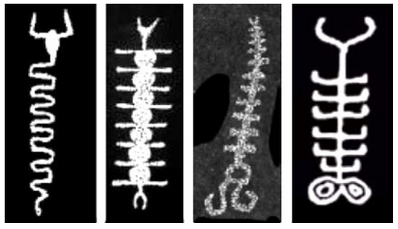
The simulation accounted for flat galaxy rotation curves without having to introduce exotic elements such as dark matter in order to make the equations work. This is blasphemy since the discrepancy between observed galaxy rotation curves and those simulated based on Einsteinian gravity has had to be explained exactly that way: sheer invention of something to make the square peg fit the round hole. However, as Peratt's experiments demonstrated, a flat rotation curve emerges quite naturally in a galaxy governed by electromagnetic fields, the spiral arms of galaxies are like rolling springs that have the same rotational velocity along their length. In other words, a galaxy is the physical and visible part of gigantic currents flowing through space.
In an electric universe, spinning galaxies, orbiting celestial bodies, spinning planets and stars, not to mention more mundane things like tornadoes and cyclones, are the logical consequences of Birkeland currents and the rotating electromagnetic fields they induce.
Plasma cosmology proposes that cometary comas and tails are produced by an electrical exchange between the sun and a comet. The coma is the Langmuir sheath of the comet. The intense electric field around the comet triggers massive discharges (hence the intense glow). These discharges also appear as jets which erode the surface of, and eject matter away from, the comet. The tail is made of this ionized ejecta which remains cohesive because it forms electromagnetically guided Birkeland currents. Mainstream scientists are getting rather close to acknowledging this by calling the unexplained brightening of comet Linear in 2000, a "charge exchange reaction." That is approaching heresy in the Einstein cult. The facts are that, before Einstein came along and ruined science, there were already speculations leading to an understanding of the electrical nature of the universe.
For example, in the late 19th century, Scientific American (27 July 1872, p. 57). published an article stating that Professor Zollner of Leipzig ascribes the "self-luminosity" of comets to "electrical excitement." Zollner proposed that "the nuclei of comets, as masses, are subject to gravitation, while the vapors developed from them, which consist of very small particles, yield to the action of the free electricity of the sun..." Then the 11th august 1882 issue of English Mechanic and World of Science (pp. 516-7) wrote regarding comet tails: "...there seems to be a rapidly growing feeling amongst physicists that both the self-light of comets and the phenomena of their tails belong to the order of electrical phenomena." In 1896, Nature ( No. 1370, vol. 53, Jan 30, 1896, p. 306) published an article stating that "it has long been imagined that the phenomenon of comet's tails are in some way due to a solar electrical repulsion, and additional light is thrown on this subject by recent physical researches."
But then, along came Einstein and science fell into a genuine black hole!
In the 1960s, an engineer named Ralph Juergens, who had worked as a technical editor at the McGraw-Hill publishing house, proposed that the Sun was a positively charged body at the center of an electrical system and that the Sun was itself the focus of a cosmic electric discharge which was the source of its energy - not the old E = MC2 routine. Horror of horrors! Blasphemy!
In the Juergens hypothesis, a comet spends most of its time in the outermost regions of the solar system, where the electric field will be most negative. The comet nucleus, Juergens said, naturally acquires the negative charge of its environment. This leads to electrical stresses on the comet as it falls towards the Sun. Juergens writes, "a space-charge sheath will begin to form to shield the interplanetary plasma from the comet's alien field. as the comet races toward the sun, its sheath takes the form of a long tail stretching away from the sun..."
Juergens' model of the electric sun and of electrically discharging comets was immediately taken up by Earl Milton, professor of physics at Lethbridge University in Canada. Speaking at the annual meeting of the Society of Interdisciplinary Studies in April 1980, Milton offered a ringing endorsement of Juergens' hypothesis: "The cometary body takes on the [electric charge] of the space in which it has spent most of its time. On those infrequent apparitions when it comes into the space of the inner solar system, the body of the comet gets out of equilibrium because it now moving in an electrically different environment than the one it is adjusted to. An electrical flow then occurs to rectify the situation. The sheath which builds around the cometary body glows brightly and assumes the characteristic shape of the comet's head and tail." (Goodspeed (2011), 'The Electric Comet: the Elephant in NASA's Living room?'
As comet experts know, the head and tail can take on dramatically different appearances, something that is inexplicable in terms of mainstream comet theories, but perfectly normal in electric comet dynamics. Also, these differences were recorded by the Chinese:
In short, the Sun is not a closed system that may run out of fuel one day. It appears that the Sun gets its energy from an electrical current that runs through the galaxy. As long as the current keeps flowing, the Sun will keep going. However, when the Sun goes quiet, that may mean that, somehow, it is discharging more efficiently. We're not talking here about a usual intra heliosphere discharge like the ones that are triggered by comets and which increase solar activity. Cometary activity seems to have increased over the last few years, which, according to electric comet dynamics, should increase the sun's activity. however, this is not the case. One scenario is that the sun is being 'grounded', possibly by a massive oppositely charged object such as a companion star that could even be dark, i.e. a Brown Dwarf. If a companion star is approaching our solar system it could be responsible for both the increased meteor activity (because it propelled asteroid bodies from the Oort cloud towards our solar system) and also for the decreased solar activity ('grounding'). Keep in mind that solar activity is one of the main phenomena that allows the destruction of incoming asteroid bodies by exerting intense electric fields upon them. In this way, such a companion star could pose a major threat to life on earth by both sending comets towards the earth and deactivating the 'protection system' (increased solar activity in response to interlopers) against the threat of cometary impact.
As already noted, Anthony L. Peratt and his colleagues at Los Alamos Research Laboratories conducted plasma experiments and discovered that powerful plasma discharges take on some amazing shapes, including humanoid figures, humans with bird heads, rings, donuts, writhing snakes and so forth. It just so happens that these kinds of shapes have been recorded by ancestral humans the world over, most particularly in rock carvings known as petroglyphs. He writes:
The discovery that objects from the Neolithic or Early Bronze Age carry patterns associated with high-current z-pinches provides a possible insight into the origin and meaning of these ancient symbols produced by man. ...
A discovery that the basic petroglyph morphologies are the same as those recorded in extremely high-energy-density discharges has opened up a means to unravel the origin of these apparently crude, misdrawn, and jumbled figures found in uncounted numbers around the earth. Drawn in heteromac style, these ancient patterns could mimic and replicate high-energy phenomena that would be recorded on a nonerasable plasma display screen. Many petroglyphs, apparently recorded several millennia ago, have a plasma discharge or instability counterpart, some on a one-to-one or overlay basis. More striking is that the images recorded on rock are the only images found in extreme energy density experiments; no other morphology types or patterns are observed.(Peratt (2003), 'Characteristics for the Occurrence of a High-Current, Z-Pinch aurora) as Recorded in Antiquity'.)
Plasma events can heat and fuse rock, incinerate things that would otherwise not burn, melt ice caps, induce earthquakes and volcanic eruptions, vaporize shallow bodies of water and create massive deluges of rain. Additionally, the radiation coming off the plasma can very likely affect genes in living creatures, including humans. In short, plasma interactions between the earth and comets can create chaos. In the presence of such phenomena, humans would be terrorized and certainly think that they are in the presence of powerful and destructive living beings, i.e. 'gods'. During such periods, they might seek out caves, build underground shelters and cities, build shelters of massive stone, and so forth. Evidence for all of this is present in the archaeological record.
Robert Schoch, the geophysicist at Boston University who created a controversy by pointing out that the sphinx must be thousands of years older than mainstream archaeologists claim, due to the presence of extreme water-weathering on its surface, thinks that the plasma events recorded by the ancients in their rock art are due to extreme activity of the sun. But, as we are going to see from some of the actual written evidence further on, understanding comets as electrically charged bodies, and taking Clube's and Napier's giant comet hypothesis into account, makes a better fit. I'm not excluding the possibility that the sun may certainly have produced some frightening plasma phenomena at different points in history, but I think the most concise explanation that includes all of the data is that of the giant comet with a full electrical charge interacting with the electromagnetic field of the earth, including particularly terrifying displays from fragments entering the earth's atmosphere. A giant comet could also interact with the other planets in the solar system, doing such things as stripping the water and life off of Mars, exchanging electrical potentials and leaving horrific scars on that planet, interacting with Venus in such a way that Venus might strip charge from the giant comet, thus altering its own electro-chemical make-up, and so on.
As noted above, Clube and Napier have back-calculated orbits of comet streams and found that 9,500 years ago, two major streams were in identical orbits, i.e. they must have been a single body. that means that this was a time of major break-up. Comet Oljato, one of the bodies in question, is in an orbit which would have brought it into the earth's orbital plane for several hundred years around 3000-3500 BCE, which means that there would have been quite a few close encounters of the disastrous kind at that period. At the same time, Comet Encke would have been a dramatic presence in the heavens as well. The present day northern Taurid meteors are calculated to have broken away from comet Encke about a thousand years ago, consistent with Mike Baillie's tree ring and ice core evidence and recorded in the Chinese records. In short, backtracking orbits of meteor streams and asteroids reveals astronomically and scientifically what must have been going on in the skies at various periods within the history of our current civilization as well as previous civilizations. Adding up the volume of the comets and asteroids in question, along with the estimates of the various connected dust clouds and streams, indicates that our most recent giant visitor, which the ancients knew as Saturn (not the planet), was indeed a monster. It gave birth to a whole family of monsters, and some of the products of its initial splits went on to become monsters in their own rights, each with their own family of godlets.
Despite the fact that things going on in the skies have calmed down a great deal, the likelihood is that there are still hundreds of thousands of bodies capable of generating multi-megaton Tunguska-like explosions on the earth, orbiting in the earth-crossing streams left by the giant comet progenitor. Clube and Napier write:
Astronomers, indeed scientists generally, like to think of themselves as tolerant judges and very adaptable to fresh discoveries. the evidence in this instance is however mostly the other way. One may therefore expect that in some circles the data now emerging from the Taurid meteor stream will be ignored in the hope that something reassuring will turn up. While this is a time-honoured scholarly ploy for the handling of discordant new facts, there is a moral dimension in this instance: the swarm has teeth. (Clube and Napier (1990), p. 154.)
The ancient religions of prehistoric man were unmistakable polytheistic and astronomical in character. This raises questions concerning the basic nature of the gods that were worshipped. If comets were included among the principal deities, their erratic motion and changing appearance could well have inspired a ready acceptance of the fickle character of ancient gods. ... Many Greek and Roman philosophers were, amongst other things, greatly concerned to explain comets in materialistic terms and rid them of any supernatural qualities. Inasmuch as the heads and tails of comets appeared often to take on a human form or that of animals, the aim seems to have been to prove that these were illusions created by perfectly natural causes. ... In practice, however, belief in the gods was so entrenched that the arguments seem merely to have served to convince that the gods were invisible [in the sky]... The rise of materialism in classical times came with the passing away of some very important prehistoric gods which were comets in the sky. Many of the legends of mythology can thus be interpreted as highly embellished accounts of the evolution of one, or perhaps a few, very large comets during the last 2,000 years of prehistory. (Clube and Napier (1982), p. 157)In Neolithic and early historical times, there must have been a string of naked eye comets moving along the zodiac much like the planets do. At any given time, there were probably only a few really large and dominant bodies, 'children' of the monstrous progenitor. Some of the 'children' came to earth and wreaked havoc or engaged in 'wars with one another', producing endless terrifying spectacles. The comet nuclei would have been far brighter than Venus, even at a 'safe' distance. Fierce meteor storms must have been commonplace, with many fireballs exploding in the atmosphere during them: the veritable thunderbolts of the gods. and certainly the electrical displays must have been awesome, whether between the comets, or between them and the earth, or between them and other planets in the solar system. As I noted already, the giant progenitor is probably responsible for the destruction and scarring of Mars and the loading of the atmosphere of Venus, though that was very early in its career.
In the figure above, we see various nodes of important intersections between the orbit of comet Encke and the plane of the earth's orbit. These approximate dates match the scientific data obtained from the earth itself. The ancient traditions of the 'end of the World', (yes, many 'worlds' have ended throughout history), the Egyptian intermediate periods, the collapse of the Bronze age, the end of the Roman Empire, and more, all have to be re-examined with the inclusion of the scientific data based on astronomical observations and back-engineering of the data thus obtained.
As time passed, of course, the comets would begin to lose their charge and their gasses and their tails would have diminished and faded from view, leaving only the predictable, annual, meteor showers. The gods that once hurled celestial thunderbolts and periodically got angry at human beings and "destroyed the whole world" experienced their own immolation, the Gotterdammerung, though we suspect that their 'dead bodies' are still out there, blackened by the fire - invisible, so to say - but still lethal.
In the earliest times, the celestial catastrophes came from the constellation Aries, but due to the evolution of the orbits, they gradually shifted to Taurus. In the Pyramid Texts, the earlier celestial religion, even older than the pharaohs, was the worship of a god who was the giver of life, rain and 'celestial fire'. Worship of the sky god dominates both the northern Indo-Europeans and the southern Semitic peoples from the very earliest times. And even in the earliest times, the sky god did not exist alone: he gave birth and propagated a whole pantheon of lesser gods and demi-gods.
Quite a number of alternative researchers have gotten on the bandwagon of claiming that the actual planets of our solar system move out of their orbits and interact with one another in close and terrifying ways, including exchanging 'thunderbolts' and so forth. It seems that the reason for this interpretation is due to the confusion over the names of the gods later being given to the planets that were previously associated with a particular cometary event. I don't think that these people are really considering the mechanics of what they are proposing, which are actually improbable, if not impossible. We need to look for deeper understanding and that is where we find that the Clube and Napier theory of a giant comet - or more than one - and the research they have done into the ancient orbits and texts, completes the picture.
As we will discuss further on, it was in the 4th century BCE that cosmological thinking shifted in significant ways with the rise of the new, Greek rationalism. This could only have happened if the 'gods' that had been terrorizing the Earth for millennia were beginning to decline in size, number and frequency of appearance; to spread out and disperse in longer orbits. It is at this point that we discover that a study of planetary movement arose as an 'explanation' of what the former, ignorant, irrational peoples were actually talking about when they spoke of 'gods in the sky'. It was only after this time that the planets were given the names of well-known gods, names that had previously belonged to the giant comets and their offspring. At the same time, the planets were assigned some cometary characteristics, which makes no sense at all unless the names were originally attached to comets. As late as the 9th century, the Baghdad astrologer Kitab al-Mughni described Jupiter as 'bearded' and Mars as a 'lamp', Mercury as a 'spear' and Venus as a 'horseman'. These are terms that have always before, then and since, been used to describe comets! (We are also reminded of the 'lamp' that passed between the covenant offering of Abraham, not to mention burning bushes, pillars of fire and cloud, etc.)
The idea that the planets in their distant, placid orbits, were important in any way at all was due to the work of Plato and Eudoxus. An explanation of orbits that were steady, circular, geometric and simple was elaborated by them, though Plato took some account of the ancient world-view and its events in the Timaeus. Then Plato's pupil, Aristotle, came along with his radical cosmology that banished anything that was not 'here and now' evident. Shades of Einstein and the modern scientific dogma, for sure! The cometary gods were reduced to distant folk memories of earthly heroes and the sense that 'there and then' things were very different was completely suppressed; there was undoubtedly a political motive behind this.
Aristotelian cosmology, with its focus on the perfect, planetary 'spheres', ascended and dominated religion and academia and this condition exists, more or less, right up to the present - Tunguska and all other evidence notwithstanding.
As the sky-gods faded, the myths about them became less and less comprehensible. The tales were obviously about celestial beings, but there was a problem with identifying them. The only apparent moving bodies in the solar system were the planets and the odd comet now and then, and it was clear that the planets were too few in number and too simple in movement to support the wild tales told in the celestial myths. Thus, along with the transfer of the names of some of the major comets to the planets, the names of many of the other gods came to be assigned to ancient heroes, founders of cities, and so forth.
The evidence seems to point to the idea that Aristotle (among others as we will see further on) was concerned with quieting the fears and stamping out the superstitions of the average man. He did the job well and we have suffered the consequences for a very long time, and may yet suffer even more.
Notice in the chart above that at the time of Plato, the name 'star of _____' was still being used. This 'star of...' designation was a direct reference to the brilliant nature of the comets that had evoked these names. But by 200 BCE, the term 'star of ' had been dropped, and by 100 BCE, probably no one even remembered that the names had once belonged to comets.
(Here, I am skipping the next few chapters of the book where I present the evidence that the names of these Babylonian 'gods' were originally names of comets/comet fragments.)
The bottom line is this: the 'hard' sciences must have the last word on what exactly transpired in astronomical terms and that is what Clube, Napier,Baille, Hoyle and a few others have provided.
Now, I will try to get to the discussion of the Greek philosophers as expeditiously as possible. Stay tuned!
To Part 2

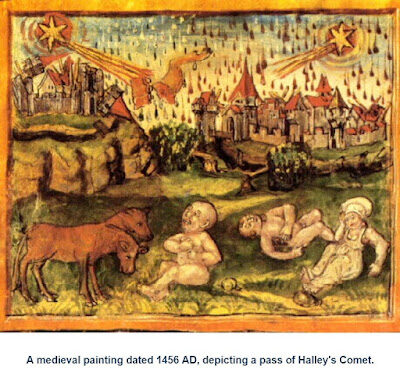
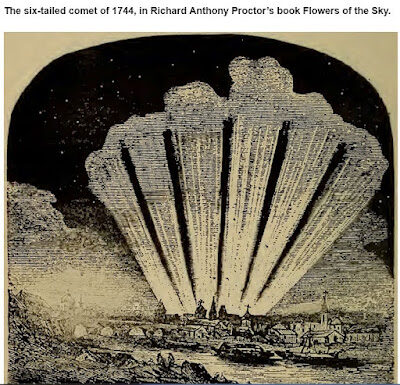
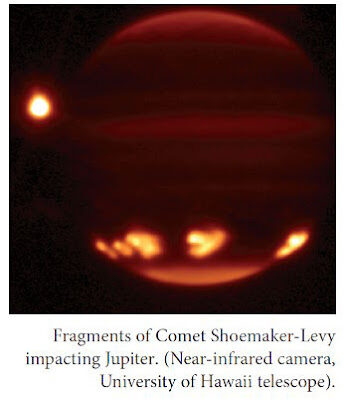
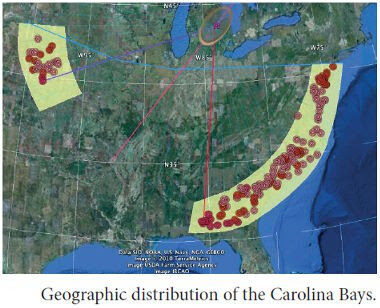

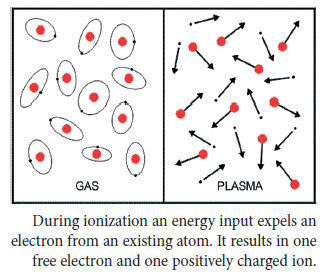
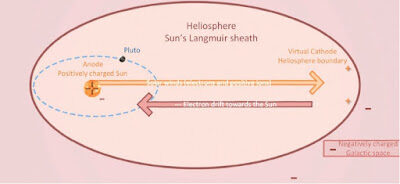
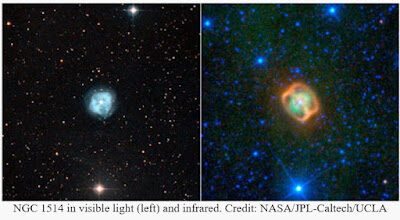
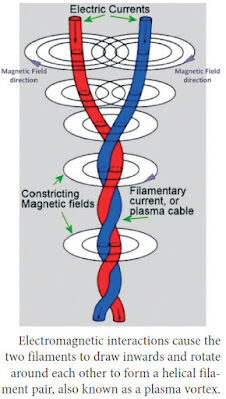
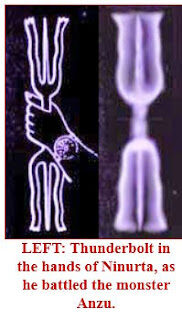
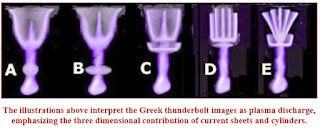


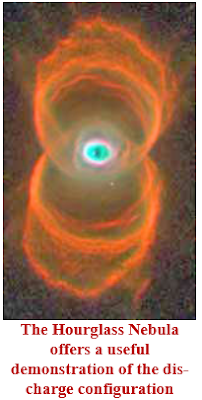
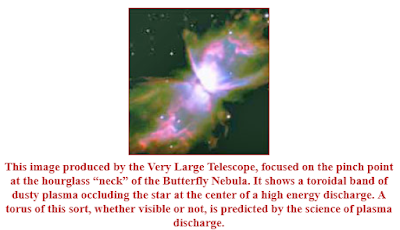
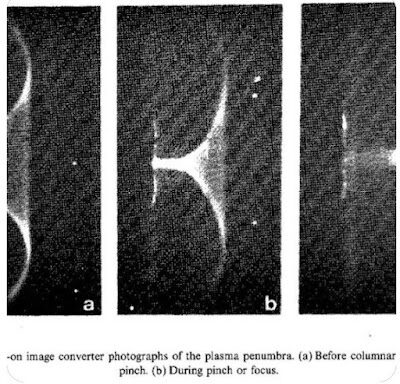
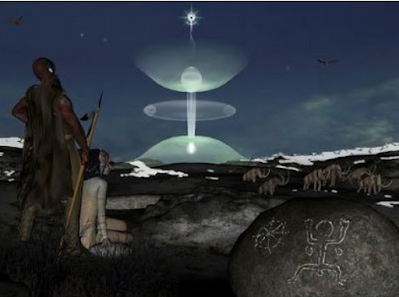

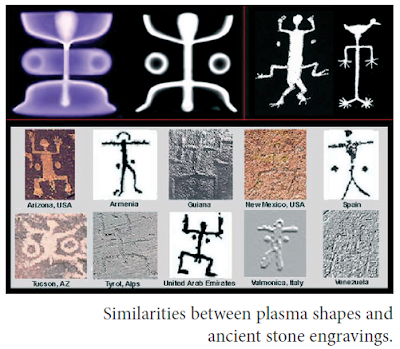
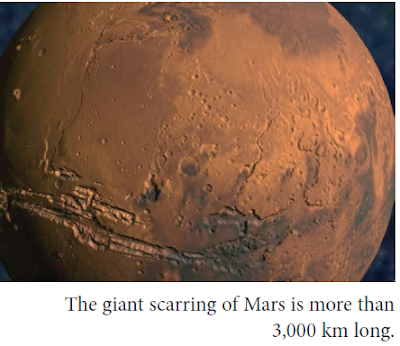
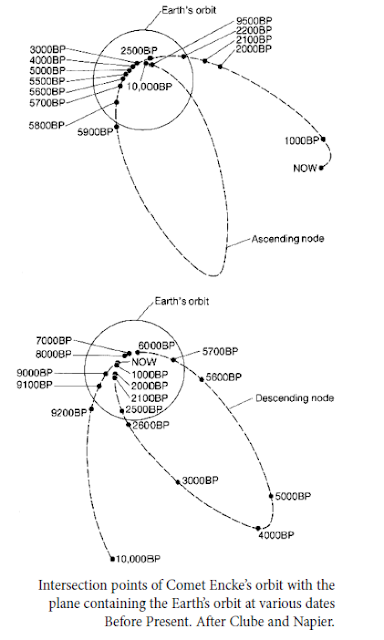
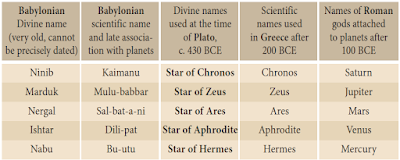
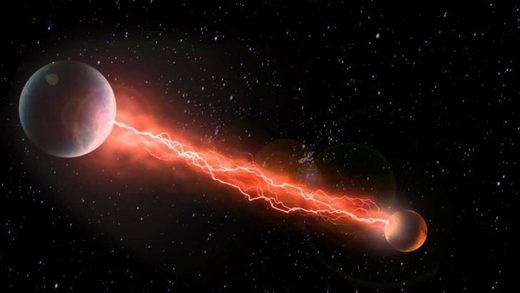

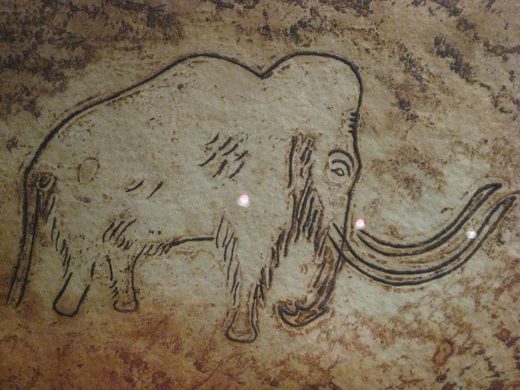



As you understand, I have no other option :-)
Once I wanted to ask you one question.
My dear, why are you rationalizing everything so much?
Haven't you learned yet that everything around you is CONTRACTUAL?
Haven't you learned yet that trying to describe reality will never work until you know that reality?
You can try to describe this reality in any language: English, Latin, Polish, mathematics, but it will always end in failure.
This is due to the fact that you can only describe reality WHEN YOU KNOW IT!
If you base your description of reality on the opinions of other people or on the opinions of beings from other dimensions, you not only move away from knowledge, but in addition you are based on shaky foundations.
As for the content of the article itself, I believe that it is only a collection of many "descriptions of reality" that you have collected from which, however, little results.
You haven't really touched on the most important point of this thread.In the case of Earth, large comets are not important. The solar system just so happens to be surrounded by a large pile of rubble called the Oort Belts.
And that's the biggest problem. Each of the bigest comets will pierce through this belt, dragging behind it a great tail of various shards. Smaller than the comet itself, but enough to produce "fire rain". Exactly as in the medieval descriptions, where the chroniclers wrote: "One day fire began to fall from the sky, as if fiery snow."
As for the time intervals, they actually seem to be cyclical. But this mystery was solved long ago.I don't know if you know, but the "Aztec timer", or rather those from whom they received it, has already been described.
It represents 13 cycles, each of 52 years. This means that the people of that time were warned by someone leaving them with this tool, which indicates the exact intervals of 676 years.
This has been talked about in some circles for years.All indications are that the last event occurred in 1348. Ofixhal it is officially called the "black plague", although the only scientist who has studied the matter for 15 years said the only thing he was sure of was that it was not the plague.
It is hardly surprising, the descriptions of the time show that it caused not only mass death, but also earthquakes and the destruction of most buildings ... it would be strange if it was a plague :-)))
I have been dealing with this topic for a long time, so I will not write more, although I am tempted :-))